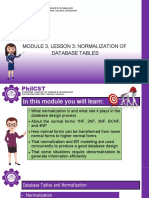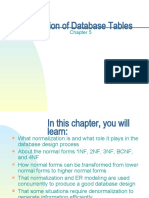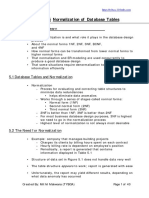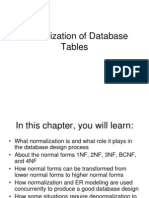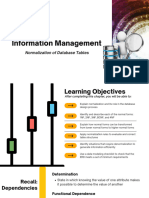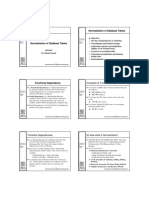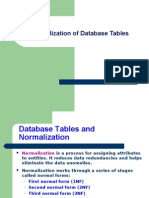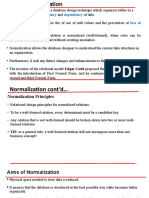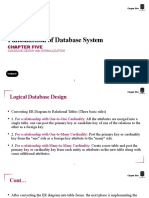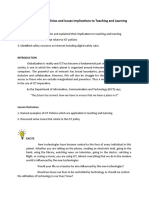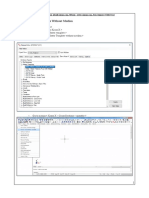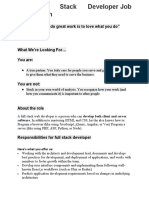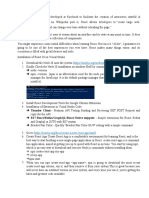0% found this document useful (0 votes)
349 views58 pagesChapter 5 Normalization of Database Tables
The document discusses database normalization and how to convert a database table to first, second, and third normal forms. It provides an example of an initial database table with issues and walks through the steps to normalize it into multiple tables to eliminate data redundancies and anomalies.
Uploaded by
imannurumairahCopyright
© © All Rights Reserved
We take content rights seriously. If you suspect this is your content, claim it here.
Available Formats
Download as PDF, TXT or read online on Scribd
0% found this document useful (0 votes)
349 views58 pagesChapter 5 Normalization of Database Tables
The document discusses database normalization and how to convert a database table to first, second, and third normal forms. It provides an example of an initial database table with issues and walks through the steps to normalize it into multiple tables to eliminate data redundancies and anomalies.
Uploaded by
imannurumairahCopyright
© © All Rights Reserved
We take content rights seriously. If you suspect this is your content, claim it here.
Available Formats
Download as PDF, TXT or read online on Scribd
/ 58



